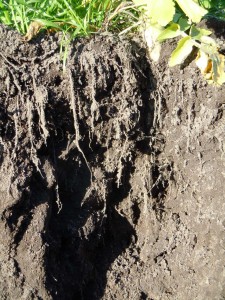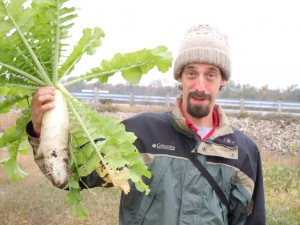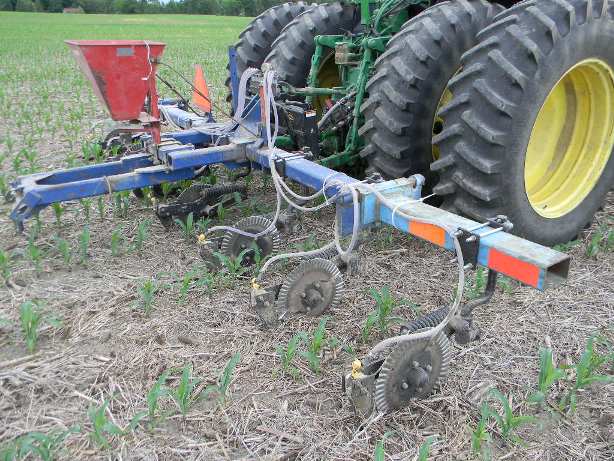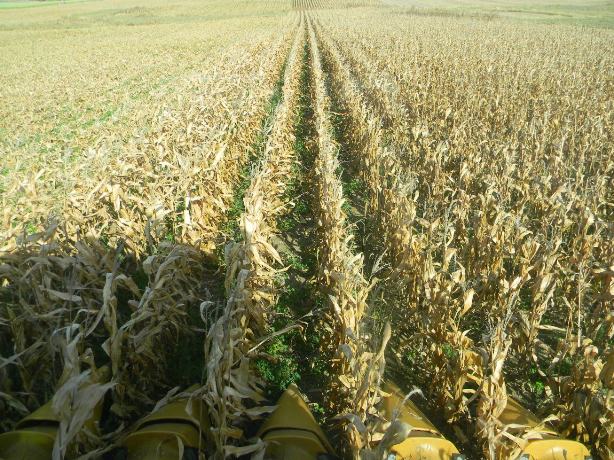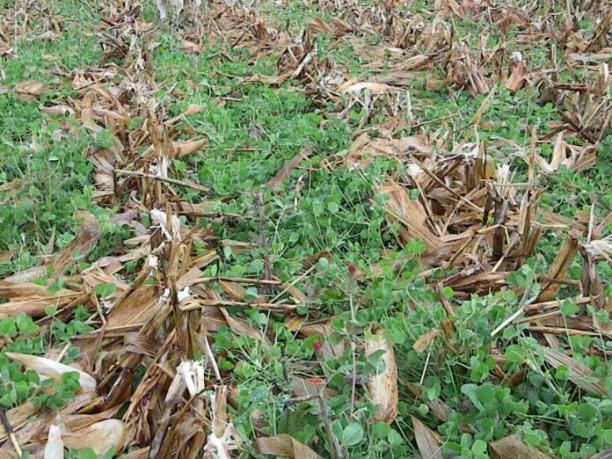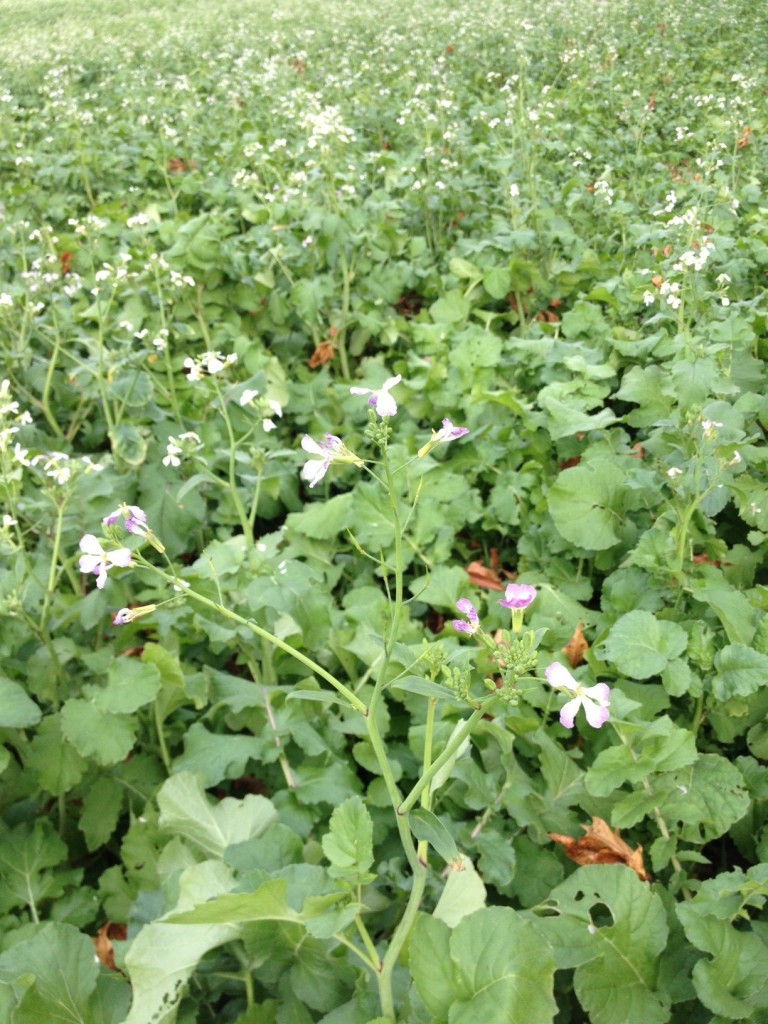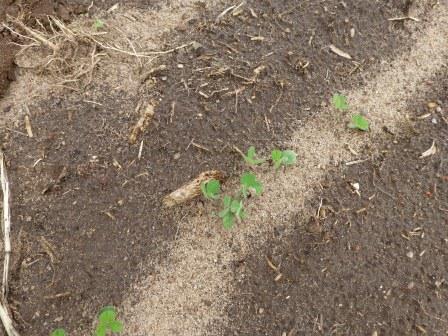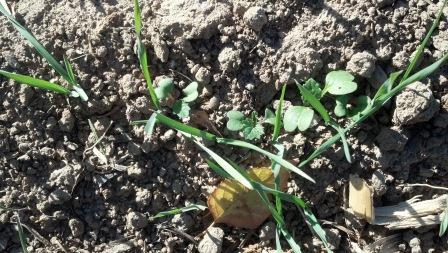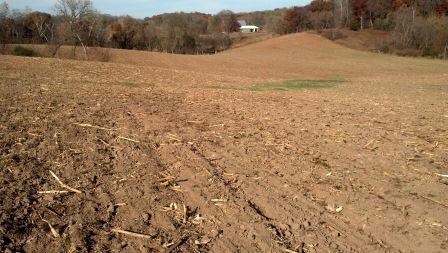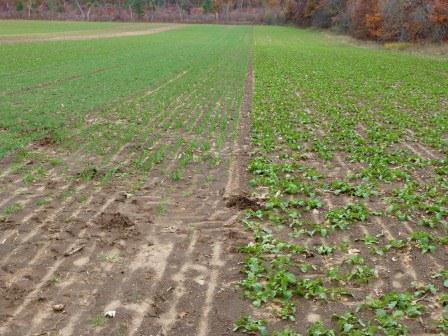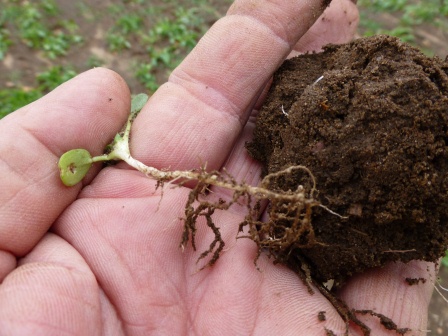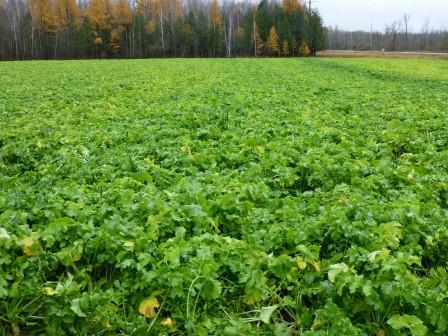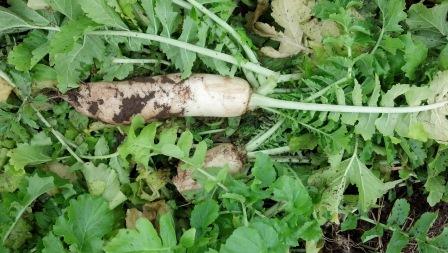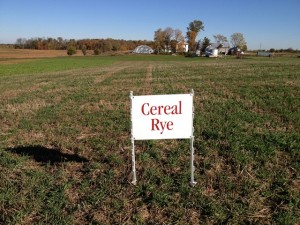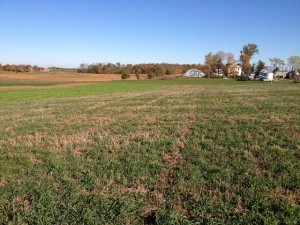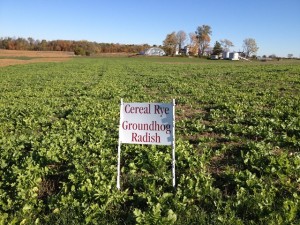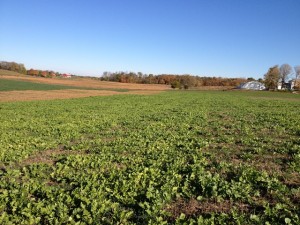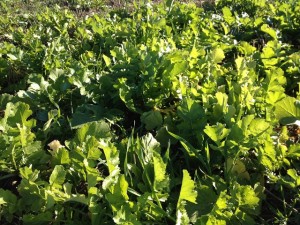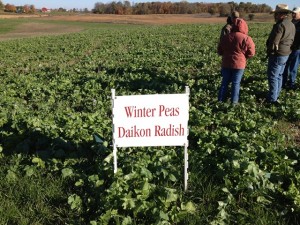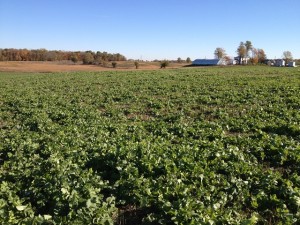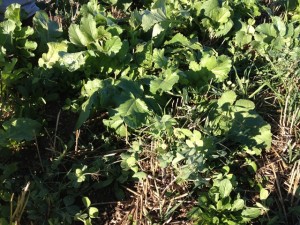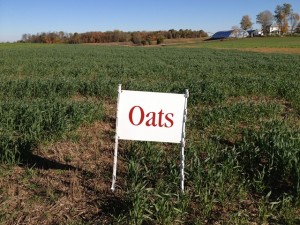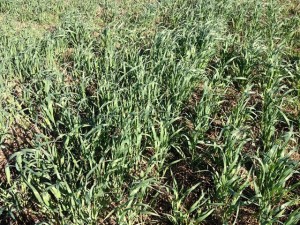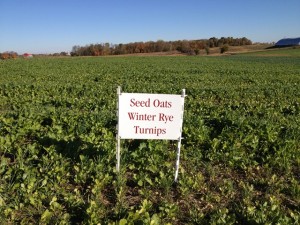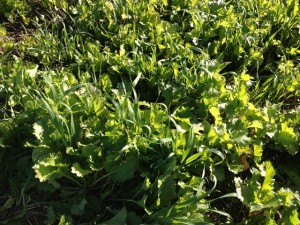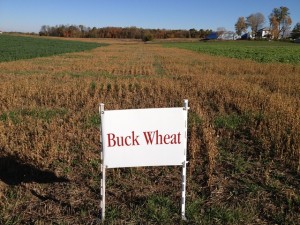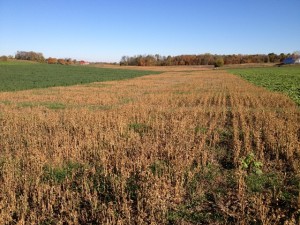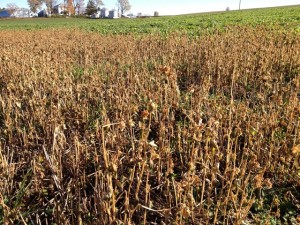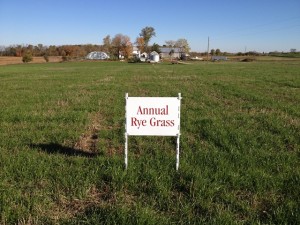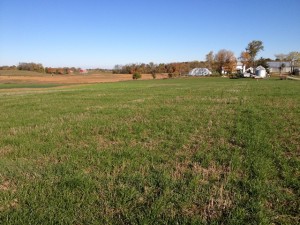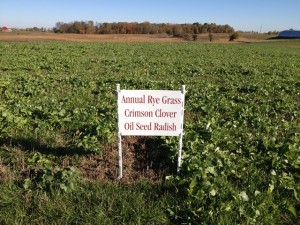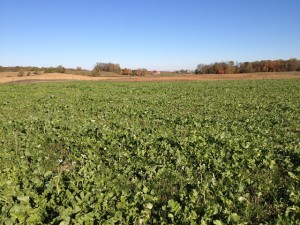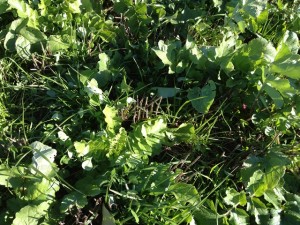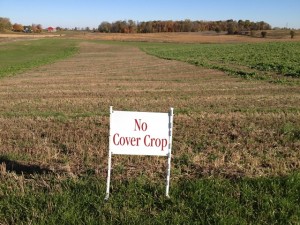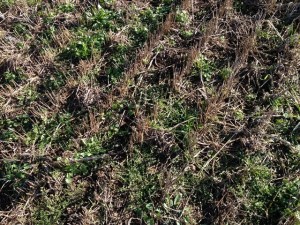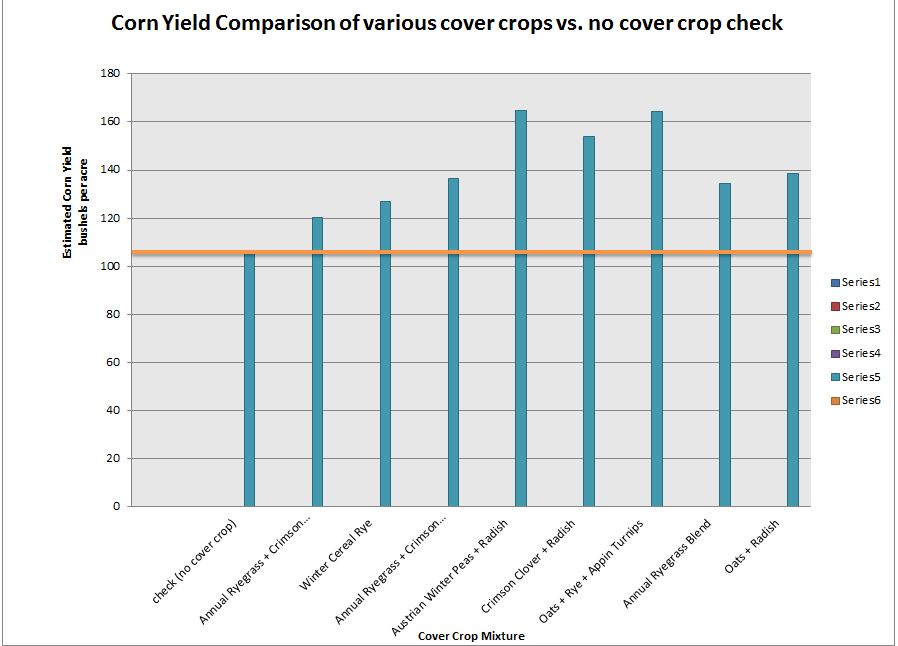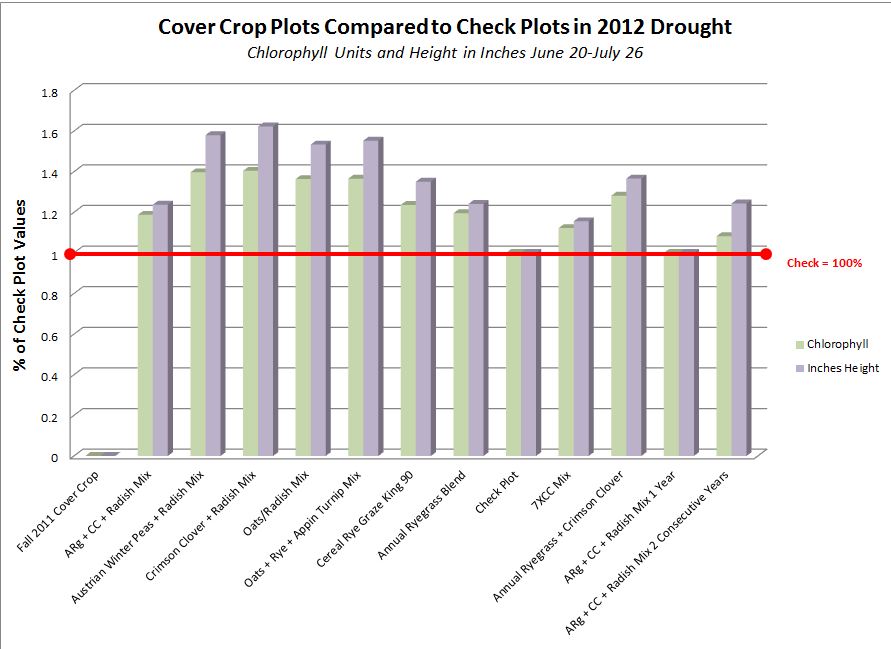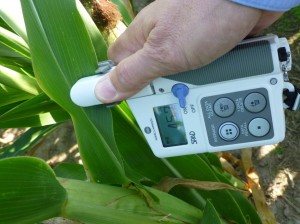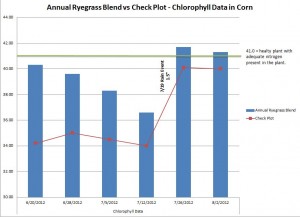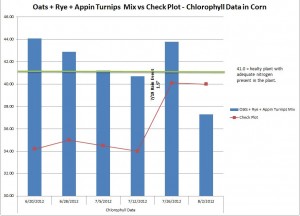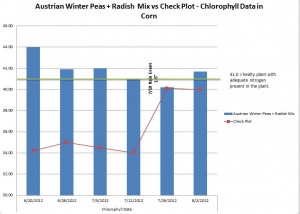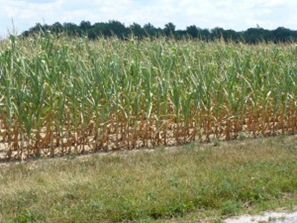The corn is now harvested at Robison Farms in rural Greenwood, IN and we are pleasantly surprised.
Accurate Yield Estimates
We actually achieved a somewhat higher yield than the hand check “guesstimate” that my brother Don and I made back in August. We reported this yield in the blog post Cover Crops Provide Improved Corn Yields in On-Farm Trial . The actual yield was 107 bushels per acre across the whole field and our estimate was in the 105+ bushels range.
This gives me confidence that the differentiation we showed in the yield in the different cover crops and cover crop mixes was pretty accurate. As you will see on the blog post there were some mixes that yielded more than 50 bushels per acre better than the no-cover crop check.
Impressive Root Structure and Soil Moisture
Would the whole field have averaged 50 bushels per acre better if it had all been in cover crops in 2012? I doubt it.
But I think it would probably have been quite a bit better than what the field averaged without cover crops. Here’s why:
- Better Root Growth
- Greater Amount of Soil Moisture
One reason that I think there would have been a significant yield increase over the whole field is because of what Don and I found when we dug up some plants. We found more moisture and more roots where we had cover crops versus where we had no cover crops.
In the non-cover crop area:
- We had to use a shovel and a pick-ax to dig.
- The ground was exceptionally compacted, hard, and dry.
In the cover crop area:
- We used just a shovel to dig.
- We had much less compaction (in most areas).
- It was distinctly more moist (like comparing a fairly dry sponge versus a sponge that had not been submerged in water for 2 months).
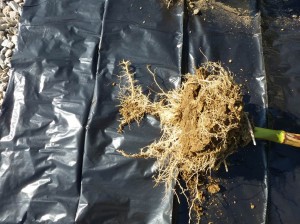
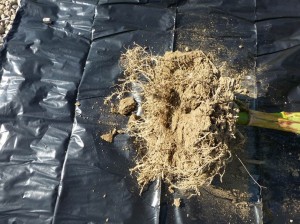
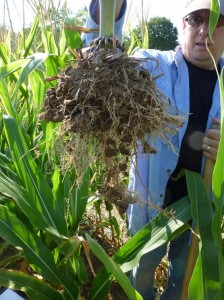
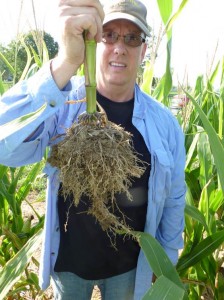
Earthworms
As Don and I were digging in the areas where we had cover crops we were pleased to find earthworms. There were no earthworms to be found in the non-cover crop check area.
This field has been no-tilled for most of the last 20 years and we usually find earthworms, but it was so hot and dry that I assume the worms either died (fried) or went deep into cooler, more moist soil (this year that may have been 5-6 feet deep). But again, we found some earthworms in the cover crop plot area.
In retrospect, we should have compared soil temperatures on the day we dug roots and took yield estimates.
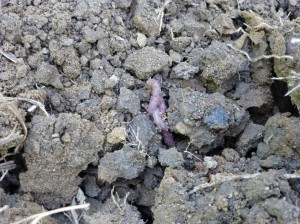
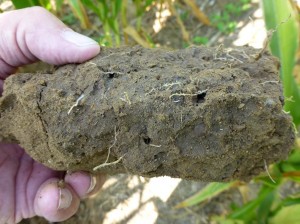
The Takeaway Message from Robison Farms in 2012
- Cover crops can increase corn yield even in very dry years.
- Corn following cover crops consistently out yielded corn that was not following a cover crop in hand check yield estimates.
- Hand check yield estimates were consistent to actual yield on the non-cover crop check.
- Cover crops can help preserve soil moisture even in a severe drought.
- Corn roots following cover crops appeared to be consistently larger and deeper than where there had not been a cover crop.
- There was more earthworm activity in the cover crop areas.
- There was less compaction in most cover crop plots compared to the non-cover crop check.
In a future post we will look at “Crop Health Imaging” maps that Beck’s Hybrids did for our farm. These were taken a bit late in the season but they were still very interesting…and telling!
